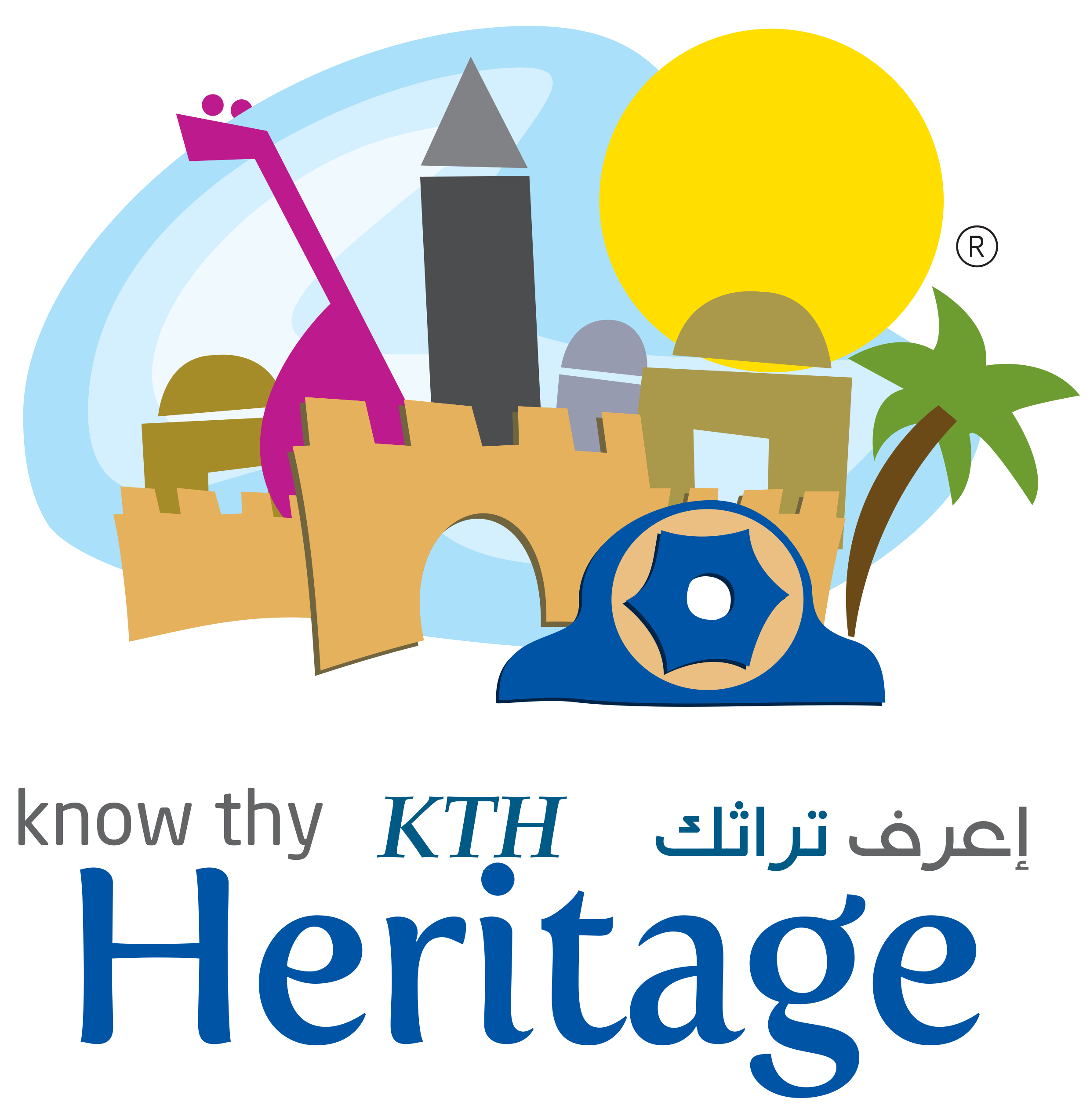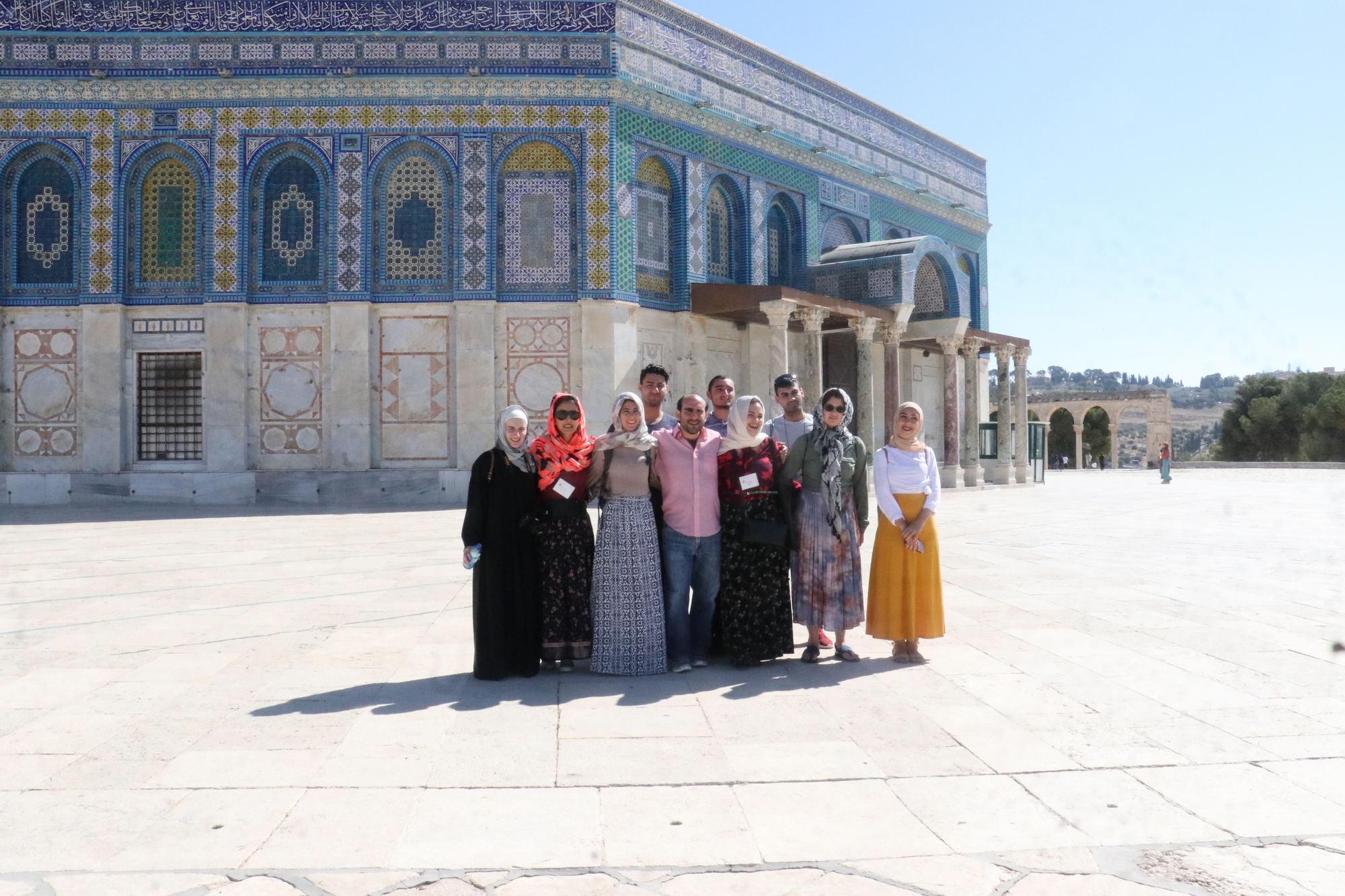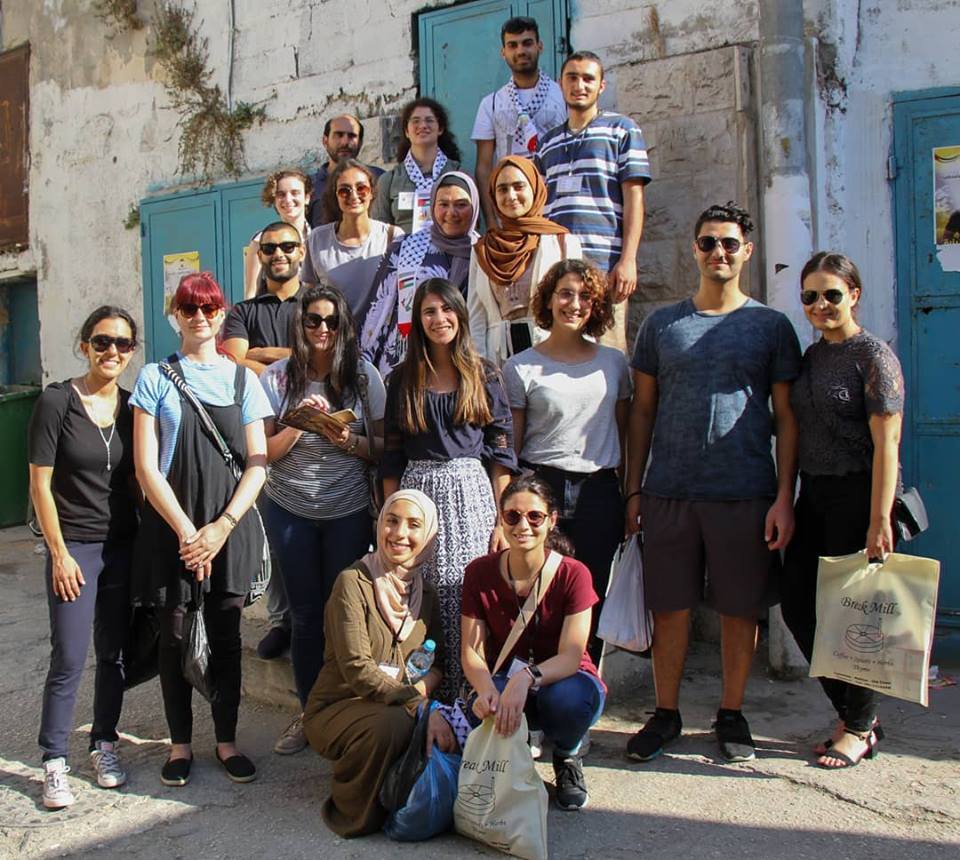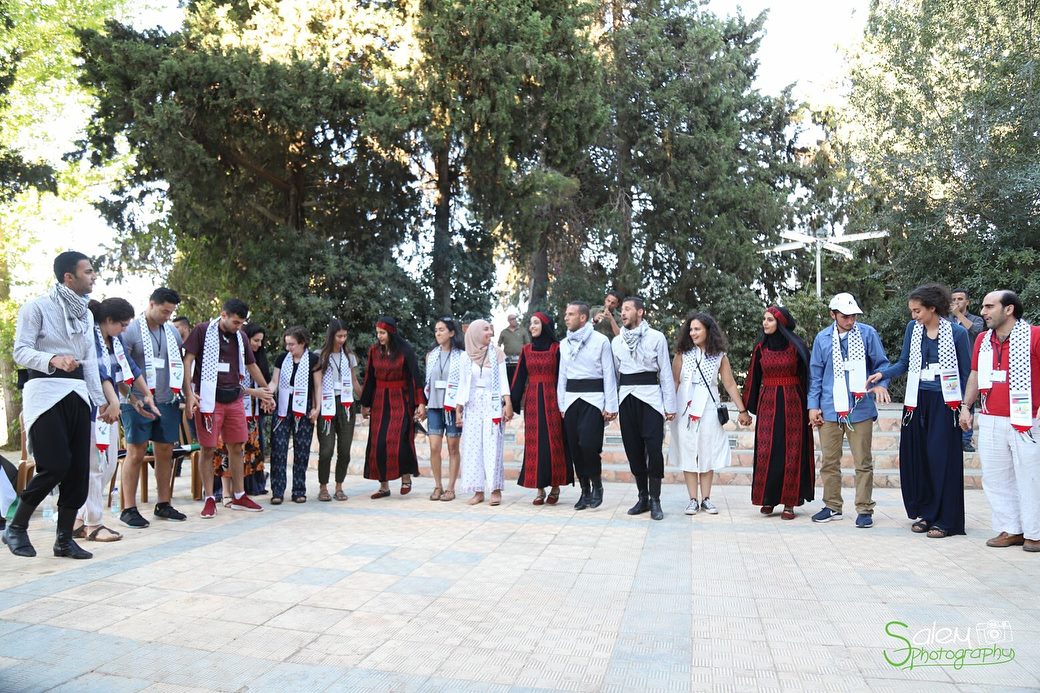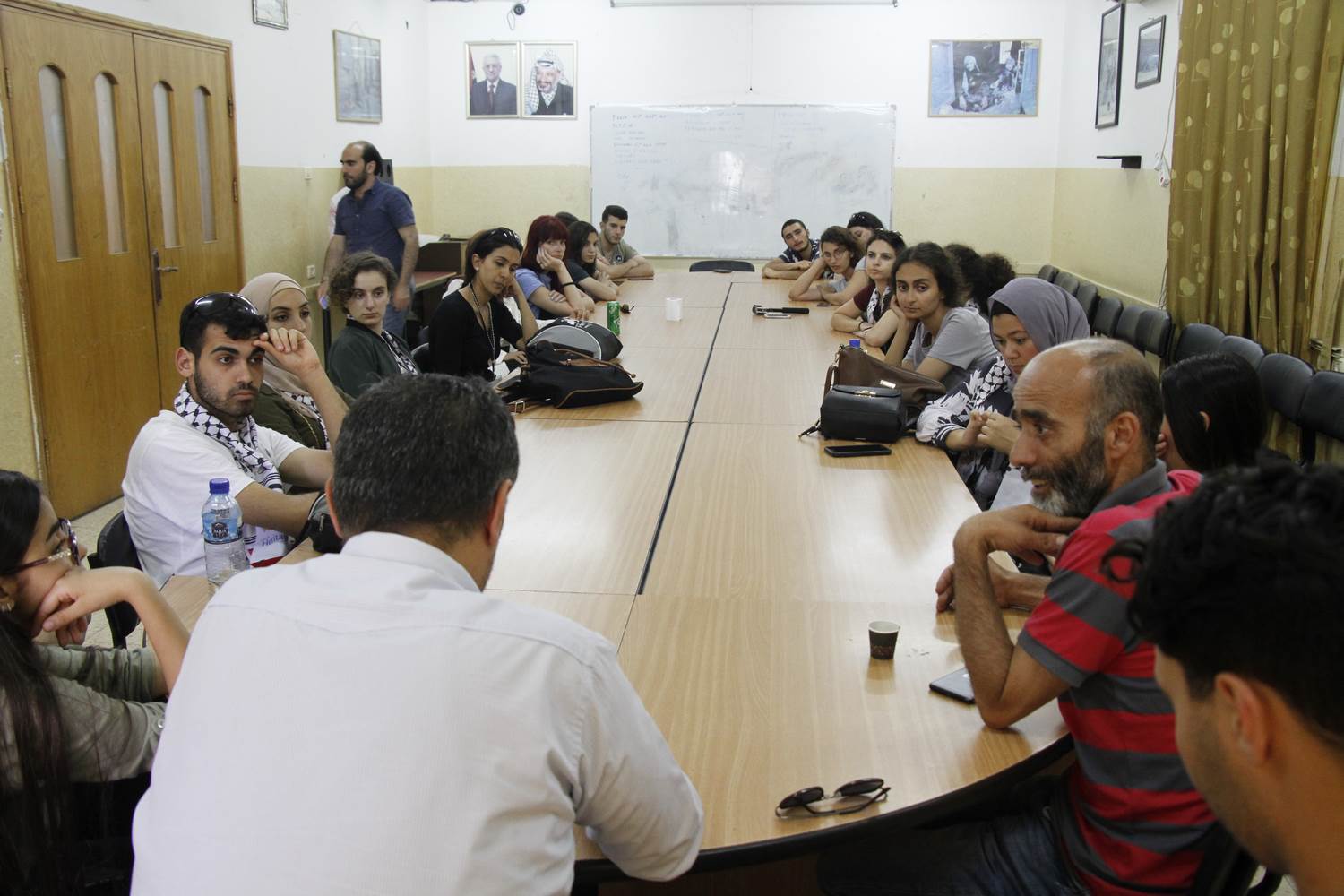JERUSALEM, the city of Peace
 By Sumaia E., Australia | Tuesday, July 10th, 2018
By Sumaia E., Australia | Tuesday, July 10th, 2018
Jerusalem is the smell of freshly baked ka’ak in the early morning. It is the simultaneous sound of church bells and adhan calls. Jerusalem is the rush of worshippers and workers as they make their ways between the old city walls. It is everything you could hope for and more from one of the oldest cities in the world. It is the home of the Abrahamic faiths. This is my Jerusalem.
If you were to ask each delegate the area which they were most excited to visit, most would exclaim JERUSALEM. Jerusalem is a city that words cannot give justice to. The overwhelming emotions of hope and of serenity, makes you realize why this one city has been fought for and captured by many groups since the early days of history. You don’t need to be a religious person, or even belong to a religious group to appreciate the magnetic nature of the city. Many know Jerusalem for its historical and religious connections. However, for Palestinians it is the capital of our Palestine, it is the hub of our multi-faceted identity.
Even with the high security measures, the city still maintains its identity of rich culture and resilience. We meet with our guide from Palvision who looks just as excited as we do to share the stories of the old city. As we walk through the courtyard, I hold my breath as I see a glimpse of a gold dome peaking above the high trees. The sun reflected its surface making it glisten in the early morning rays. We reached the top of the stairs and are immediately met with splashes of blues, greens and gold. The Dome of the Rock stood solid in all its beauty and perfection. It seemed unphased by what was happening around it. The guide tells us of the significance of this mosque to the Muslim belief system, as the last prophet of Islam Muhammad ascended to the heavens from this point. We then make our way to the Al-Aqsa mosque, which is a straight walk from the Dome of the Rock. The guide tells us of the religious significance of this mosque as the third holiest site for Muslims. He also shares it was the first qibla (direction of prayer) before the Ka’ba. I choose a window seal to sit and rest. I sit quietly as I watch the worshippers come in for their daily prayers. I curiously wonder what they pray for.
We leave the Islamic holy sites to make our way to the Church of the Holy Sepulchre. A moment we were all excited to see. We made our way to the other side of the old city passing by the stalls selling collections of Palestinian merchandise. We enter the Christian quarter of Jerusalem and are immediately met with a beautiful selection of holy and sacred goods. Rosaries dangle proudly displaying Palestinian colors and pendants. Icons and statues made from olive wood entice us, whilst the smell of bakhoor fill our lungs as we searched for the Holy Sepulchre, located in the heart of the Christian Quarter. We eagerly climb down the stairs passing Omar Mosque to find the entrance of this significant and holy church, for it is here that Jesus Christ was laid to rest before his resurrection.
Upon entering the Church, our eyes are immediately drawn to a slab of stone called the Stone of Unction. It is here Jesus was laid after his crucifixion and was anointed and prepared for burial. Worshipers kneel and touch this sacred stone in hopes of achieving peace and connection to God. We continue to make our way through the Church.
Oil lamps are suspended from the ceiling, lighting our path as we make our way to the Rotunda containing Jesus Christ’s tomb. A swarm of pilgrims wait in line, some holding prayer beads in their hand, some whispering silent prayer and most looking hopeful and filled with faith. Pilgrims, who have travelled far and wide of many different cultures and languages, share not much in common but one… their love for God and faith.
We left the church and made our way to the African community center where we feasted on traditional Palestinian food of freekah, mahloubi and lots of delicious sides. We had some time to shop in the Old City then made our way to the Casanova Hotel. It is here that delegate Stephanie, from Columbia, reconnects with her family history. The hotel was the accommodation her grandparents used to seek refuge in, when they were forced to leave their home in Jerusalem after an explosion destroyed their home. We then made our way to the Yabous Cultural Centre. Our guides from YCC Rania and Dawoud tell us of the importance art has played in the expression of the Palestinian struggle and identity. They share their own experiences and tell us of the rich history of Jerusalem.
The tour of the center takes us to the renovation of a new performing arts theatre. This shows the need and success of the arts and how they are gaining more popularity amongst the community. We engage with fruitful conversation of the history of Palestinian people living in Jerusalem over time and their expressions of identity.
The day had unfortunately come to an end; it was now time to board the bus. Despite the long day filled with a lot of walking, we still had so much energy to discuss our experiences. It was one we truly will never forget. The saddest realization is that by having our foreign passports, we have more rights and opportunities to visit this great city. Most Palestinians need to apply for permits to visit Jerusalem and could wait years to be accepted. We felt lucky and a sense of entitlement, not knowing the struggles of our people to get to the holy city. We hope one day Jerusalem will be free of siege and open for all people.
